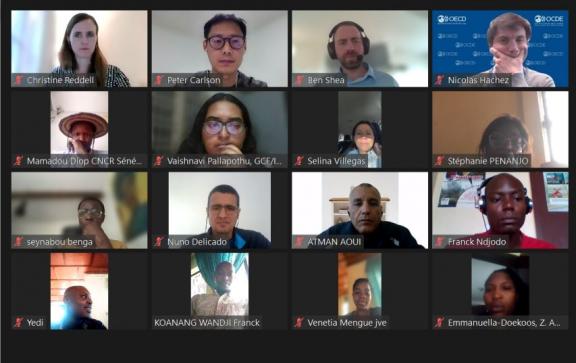Enhancing Access to Grievance Mechanisms: Key Takeaways from the 11th GRAM webinar
Grievance mechanisms serve as essential avenues for individuals and communities to voice concerns, seek redress, and hold institutions accountable for their actions. For a grievance mechanism to effectively fulfill its role, affected communities need to know that it exists, have trust in the mechanism and be able to access it.
On 3 April 2024, the Grievance Redress and Accountability Mechanism (GRAM) partnership held its 11th webinar, hosted by the Independent Redress Mechanism (IRM). The webinar focused on the critical topic of increasing access to grievance mechanisms. The event brought together experts, practitioners, and stakeholders to delve into strategies for improving access to remedy for projected-affected individuals.
Ben Shea, Human Rights Officer at the Office of the United Nations High Commissioner for Human Rights (OHCHR), began the webinar with an introduction to the UN Guiding Principles on Business and Human Rights (UNGPs), which outline eight criteria for grievance mechanisms to be effective, including 1) Legitimacy; 2) Accessibility; 3) Predictability; 4) Equitability; 5) Transparency; 6) Rights compatibility; 7) Continuous learning; and 8) Engagement and dialogue.
On the accessibility criterion, Ben focused on five areas of guidance that mechanisms should take into account, including proactive awareness raising, user-friendly design, minimising financial barriers, complementarity and keeping people safe.
“One of the biggest barriers we observed in practice, particularly in the context of development finance, is that people simply do not know what mechanisms exist to help them. Rights holders often don’t know which institutions are involved in, or funding, a project. Even when they find that out, they don’t know that those institutions may have a mechanism in place.” Ben Shea, OHCHR
Christine Reddell, Case and Policy Specialist at the Social and Environmental Compliance Unit (SECU) of UNDP, showcased how SECU ensures accessibility through its outreach and investigation functions. Through a combination of outreach missions, newsletters, audiovisual materials and social media, SECU is able to increase the visibility of its work. Christine also shared how complainants can reach them through several contact methods, including website, email, social media, telephone and messaging apps. She also highlighted the importance of confidentiality in ensuring user-friendliness and accessibility to affected individuals.
“We recognise that fear of retaliation is a barrier to access.” Christine Reddell, SECU
Peter Carlson, Communications Officer of the IRM, then discussed how the IRM used an advocacy grant to work with civil society organisations to increase awareness with local communities. He introduced one of the grant recipients – Herve Makebel, Head of the Climate, Energy and DRR Department at the Young Volunteers for Environment (YVE) Cameroon.
Herve outlined how YVE implemented a four-pronged approach to discuss the role, values and mandate of the IRM with local communities. For each activity, he outlined the main results, challenges faced and lessons learned.
- A community dialogue with community leaders
- A media campaign, including radio and television interviews
- A digital campaign for the public distribution of key IRM messages;
- A regional webinar covering participants from various African regions (West Africa; East Africa; Central Africa; North Africa)
In conclusion, the 11th GRAM webinar illuminated the critical importance of enhancing access to grievance mechanisms in fostering accountability and justice within climate finance. By prioritising proactive awareness-raising, user-friendly design, and confidentiality, grievance mechanisms can help ensure that affected communities have the knowledge, trust, and means to access remedy.
